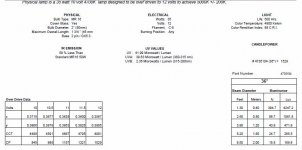Hermann
Well-known member

... I recently discovered a complication. I had been using anything between 7m and 30m and had a feeling that I was getting better results at longer range but the differences were small. Recently a forum member was kind enough to donate a better chart which allowed me to get down to 2.5m, (which would be great for indoor testing) and it became totally obvious that I was getting poorer resolution results at near focus than longer range with a new acquisition. I was waiting for better weather to retest all my roof binos to see if the phenomenon is more widespread. I'll stick with 10m+ for this comparison.
I think sticking to 10m+ is a very good idea. It seems quite possible that the image quality of binoculars (including the resolution) doesn't stay the same across the entire focus range. They normally reach their maximum resolution at infinity, and the closer you focus the more the image deteriorates. Tobias Mennle comments on this in his review of the SLC 8x42. He found a marked deterioration of the image quality at short distances: http://www.greatestbinoculars.com/allpages/reviews/swarovski/swarovskislc8x42/swarovskislc8x42.html
Interestingly he didn't find the same deterioration in the Habicht 8x30 (external eyepiece focusing). Is it possible that this is caused by the internal focusing of modern roofs?
Hermann




